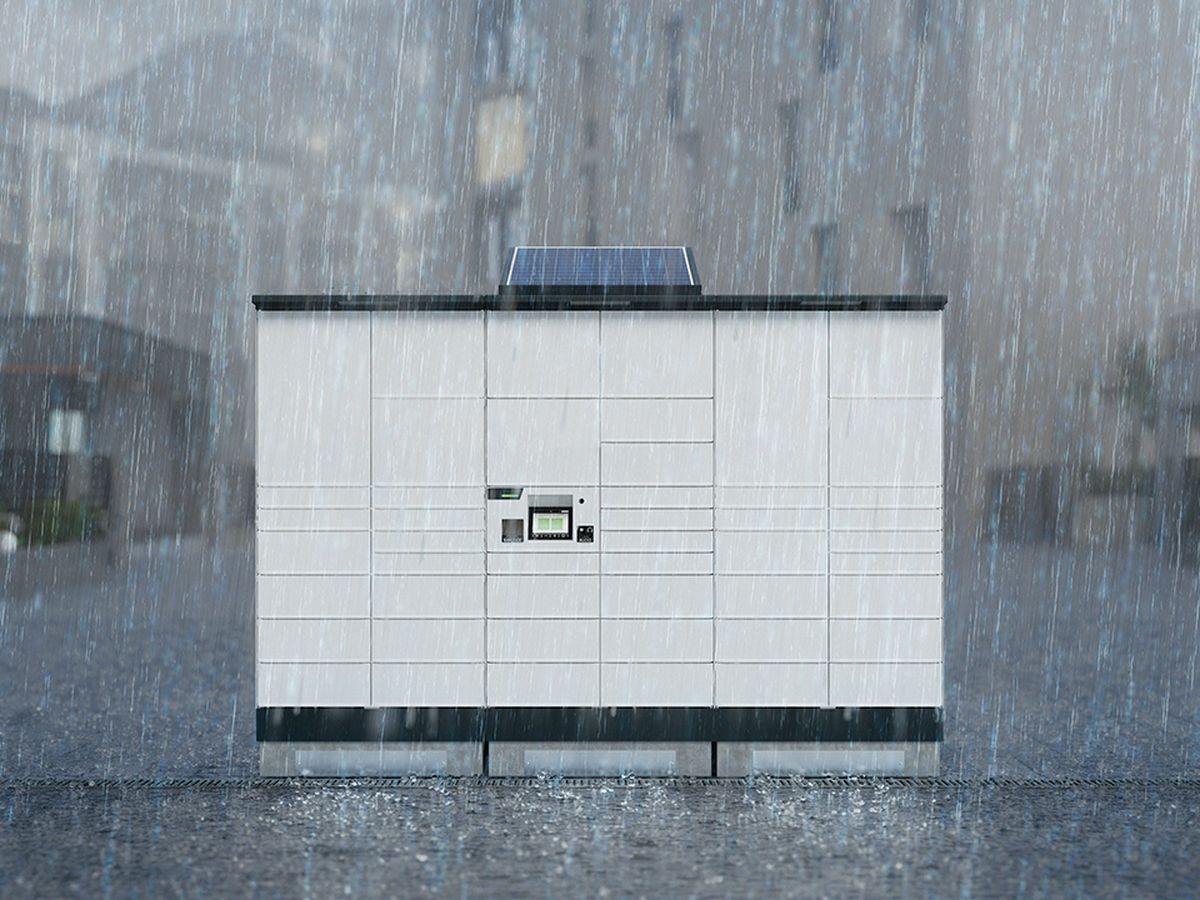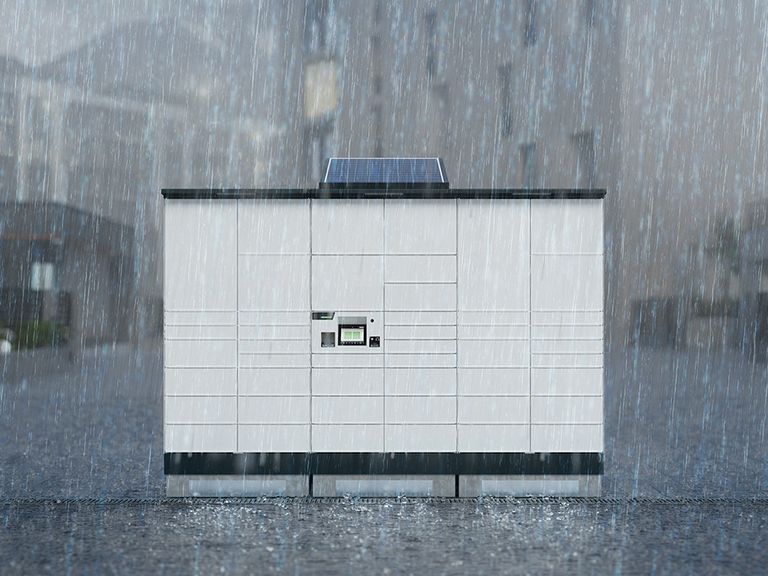Robust parcel stations from KEBA - a reliable partner even in stormy times
- News
- Knowledge
- 27.5.2025
- Reading Time: {{readingTime}} min

Contents
Whether extreme heat in summer, snow and ice in winter or storms in the transitional period: parcel stations must be available at all times to ensure high customer acceptance. Wind load in particular can become a major challenge here, as it can affect the stability of the locker. Climate change additionally favors extreme weather events and will cause them to occur more frequently in the future. A parcel locker that is well secured against wind load is therefore a good investment and absolutely future-proof.
Overturning parcel locker as a danger to people and animals
Therefore, it is essential that they are securely anchored to the ground at all wind speeds to minimize the risk of tipping over. Otherwise, these stations could pose a significant danger to people and animals, as well as to vehicles such as cars, and this must be strictly avoided.
To prevent such incidents, various factors must be considered during the planning and construction of a parcel station, such as the wind speed and direction at the location. Additionally, the materials and anchoring of the stations must be designed to be sufficiently robust and stable to withstand wind loads.
Whether the parcel station is free-standing or, for example, mounted against a wall can also make a crucial difference. However, wall mounting improves wind resistance less than one might expect. A considerable amount of weight is still required for stabilization.
loxmate series parcel stations can be securely installed in virtually any location.
Depending on the wind load zone*, different hardware is required both for the parcel station itself and for the foundation – requirements that are optimally covered by the options portfolio.
The higher the wind load zone, the greater the demands on the stability of the parcel station.
With the FS and Flex series, wind load requirements are already met, offering a suitable parcel station for any location. With loxmate, we take it a step further. Thanks to the modular design, the parcel stations can be individually configured – from the roof down to the base. Three different base variants ensure that the parcel station can be securely installed at any site.
Base Variants
Indoor Base: This lightweight variant can be easily transported through doors measuring at least 200 x 90 cm – ideal for indoor installations.
Steel Base: This base type is primarily designed for outdoor use but can also be installed indoors, provided that access is sufficiently large (at least 215 x 105 cm). No anchoring is required indoors. For outdoor installations, ground anchoring may be necessary depending on the wind load at the chosen location.
Concrete Base: The concrete base is designed for installation in front of a wall. Depending on the wind load at the respective location, this base can also be anchored to the ground, either in front of a wall or as a freestanding installation. In particularly windy regions, an additional concrete element can be mounted on the rear of the parcel station. Based on whether the installation is wall-mounted or freestanding, there are two corresponding variants, both with the option for ground anchoring.
The concrete base with additional concrete element is especially popular in the self-sufficient version with PV modules, as it enables freestanding installation and independence from external power sources.
The comprehensive range of options offers the right safety features for every location
In addition to the wind load zone, the design of the parcel station is another important factor that must be considered in the structural calculations.
For example, if the customer requests a PV system or a custom roof, this will affect the stability of the pickup station. The installation location also plays a crucial role – whether the parcel station is to be placed adjacent to a building or as a freestanding unit.
To ensure stability, an additional concrete element may be required at the rear of the parcel station in addition to the concrete base. The comprehensive range of configuration options offers the right safety features for every location – making nearly any site possible.
Full focus on safety requirements
Keeping all security aspects in mind can be a challenge. To ensure an optimal design of your parcel station, our sales team supports you throughout the entire purchasing process, from the selection of components to installation. In our calculation tool, different scenarios can be calculated regarding the design of the parcel locker and the desired location. The calculation takes the geographic location (urban, suburban or rural), the wind load zone as well as the selected options into account and indicates whether the parcel station in the preferred design can be installed at the desired location without safety concerns or whether additional safety elements are necessary.
Reach out to us – we’ll help you configure the optimal parcel station solution.
Sustainability thought further
With our durable hardware, we also take our sustainability efforts into account. In addition to the classic version, our parcel locker are also available in an eco variant. These are equipped with photovoltaic cells, making complex site preparation and cabling obsolete. This means that the parcel station can be operated completely self-sufficiently and can be set up almost anywhere.
Wind load zones are areas classified according to their exposure to wind. Zones are classified based on the average wind speed, which is measured at a height of 10 meters above the ground. There are four wind load zones in total, ranging from zone 1 (lowest load; < 22.5 m/s or 81 km/h) to zone 4 (highest load; > 30 m/s or 108 km/h).









